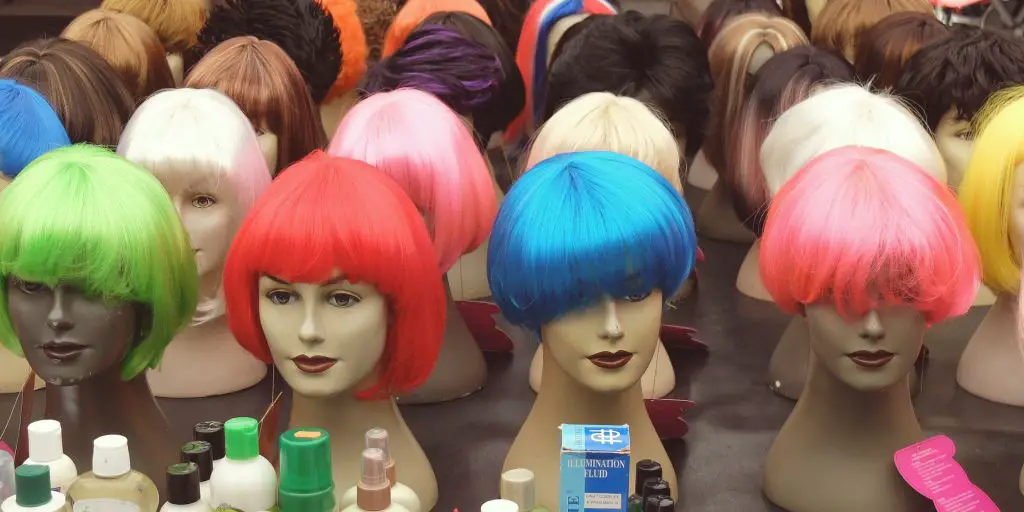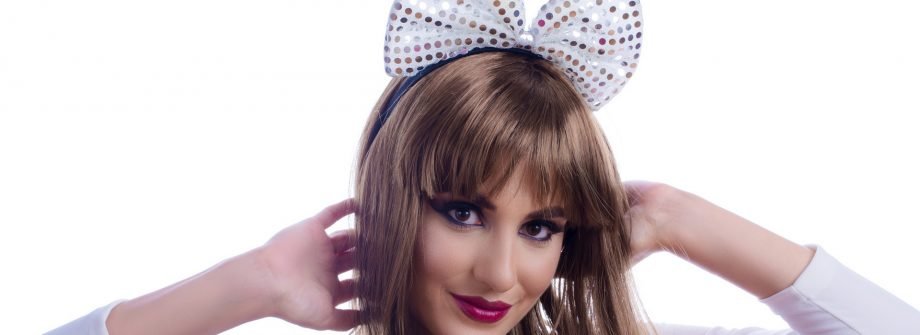We talked about hair density but what does density mean in wigs? And, additionally – why do you need to care about wig density? Isn’t it enough to just pick a wig you like?
Technically, yes, however, the hair density specification on wigs is still helpful when you want something slightly different from your current wig and you need to figure out exactly what. The term is also useful when shopping for wigs online or when you talk with hairstylists.
So, here we’ll go over what wig density is and what you need to know about it.
What is wig density?
Wig hair density means exactly what standard hair density means – it’s the number of individual hairs per square inch of the wig’s cap. The more hair strands there are, the higher the hair density and the thicker the wig will look.
Hair density shouldn’t be confused with hair volume, of course. Hair volume measures the overall volume of your hair. It is affected by the hair’s or wig’s density but also by the hair’s texture, form, and style.
The easiest example here is that curly or wavy hair has a naturally higher volume than straight hair of the same density. In fact, it’s perfectly possible for wavy hair with lower hair density to have more volume than straight hair with a thicker density.
Now that we’ve answered the “What is hair density in wigs?” question, let’s go over how you should pick your wig’s density.
What are the standard wig density types?
 So, what is the best density for wigs and how is it even measured? Wig density is measured in percentages with 100% actually being the lowest density you can get. The other standard wig densities include 120%, 130%, 150%, 180%, and 200%. Let’s go over them individually and see how they compare with each other.
So, what is the best density for wigs and how is it even measured? Wig density is measured in percentages with 100% actually being the lowest density you can get. The other standard wig densities include 120%, 130%, 150%, 180%, and 200%. Let’s go over them individually and see how they compare with each other.
100% density wigs
These wigs have the thinnest possible hair spread. If you’re looking for a thick and luscious wig, those are obviously not the best choice. However, this doesn’t make them bad wigs. While with natural hair people are usually annoyed with their low hair density, the purpose of hair wigs is often to imitate your normal hair, not just/always to “look better”.
So, with that in mind, 100% density wigs do have their advantages. For one, if your own hair is or was with a naturally light density, a 100% density wig will likely look as close to it as possible. Additionally, low-density wigs are lighter and more comfortable on your scalp than high-density ones. The fewer hair strands there are, the less your scalp will sweat, and the easier the wig will feel on it.
Besides, if you want a wavy or curly hair wig you probably don’t want to go too high on the density anyway.
120% density wigs
These are the average standard for hair wigs. They usually mimic standard human hair the best unless your hair was denser or thinner than average. This density is especially realistic for straight or Yaki straight hair (chemically relaxed Afro hair).
130% density wigs
Also viewed as “standard density” 130% wigs are also a common choice for most people. They are a great medium choice when you want a nice voluminous hairstyle.
150% density wigs
This is a denser than a normal type of wig that’s excellent for people who want extra volume in their wig. These wigs offer a lot of extra bounce and movement but they are also on the heavier side.
180% density wigs
A truly high-density hair, these wigs are for those who want to maximize their hair’s volume. They can be uncomfortably heavy and sweaty to wear, however, so make sure you’re comfortable with average density wigs first. Also, this density looks best on longer hair and looks unnatural for shorter hair wigs.
200% density wigs
Almost unnaturally heavy, even for long hair, 200% density wigs are usually for extravagant hairstyles that imitate celebrities or are meant for parties. These wigs are especially heavy and are meant to catch the eye of everyone around you.
Wig density vs volume vs length
We already discussed the difference between density and volume, and length should be self-explanatory. How do the three relate to each other, however? And specifically – what density should you choose based on the wig’s volume and length?
 The main density vs volume rule is that the wavier and curlier the hair is, the less extreme the density needs to be. While with straight hair you’ll often want at least 130% or 150% density to look good, a curly hairstyle can look good with 100% and 120% too.
The main density vs volume rule is that the wavier and curlier the hair is, the less extreme the density needs to be. While with straight hair you’ll often want at least 130% or 150% density to look good, a curly hairstyle can look good with 100% and 120% too.
As far as density vs length is concerned, the rule of thumb goes like this:
- For 12 “- 16” long hair go with 130% – 150% density.
- For 18 “- 22” long hair go with 150% – 180% density.
- For 24 “- 30” long hair go with 180% – 200% density.
Of course, your personal preferences will be the last determining factor so try several different options and pick the one that suits you the best.
Factors to consider when picking your wig’s density
With all that in mind, here are some more factors to consider:
- What is your natural hair’s density? You’ll need to measure that if you want to find a wig that looks as close to your own hair as possible.
- What’s your age? Hair thins out with age so it’s normal to pick thinner wigs as you age – there’s nothing bad about it, it will make your wig look even more natural.
- Consider the cap. Wig caps usually come in two types – full lace wigs and lace front wigs. Full lace wigs usually look more natural. With lace front wigs, on the other hand, it’s usually harder to figure out how much density you need.

